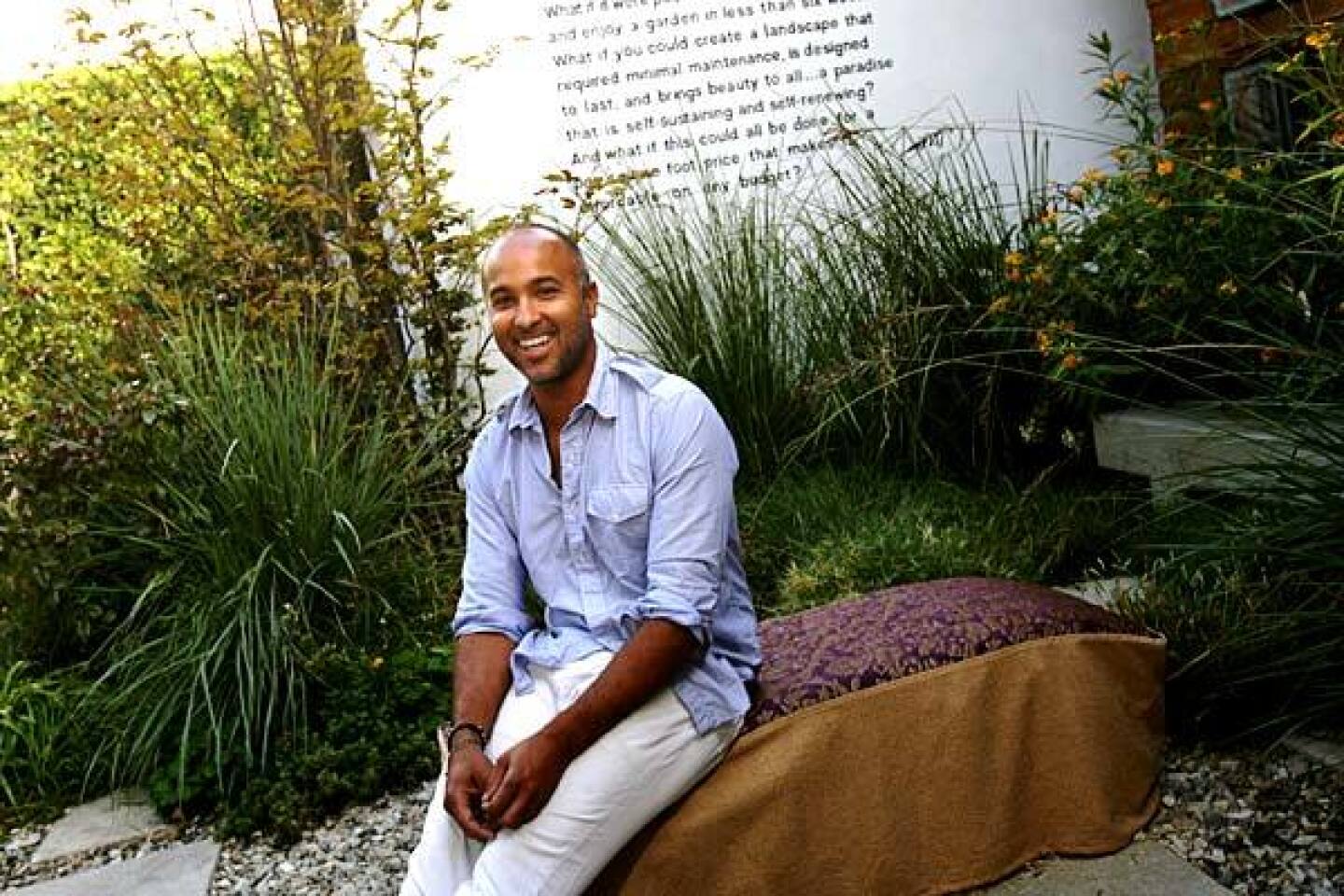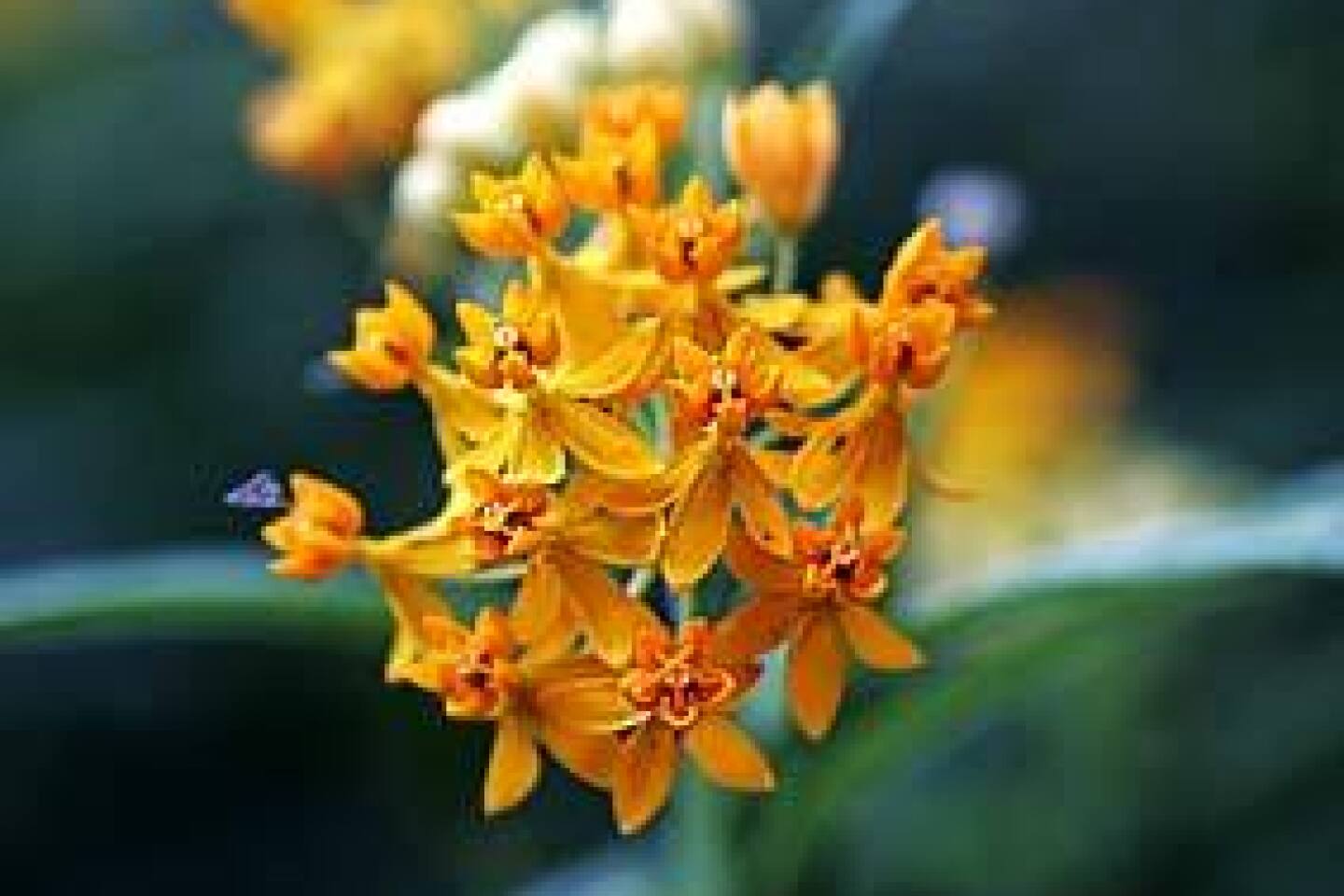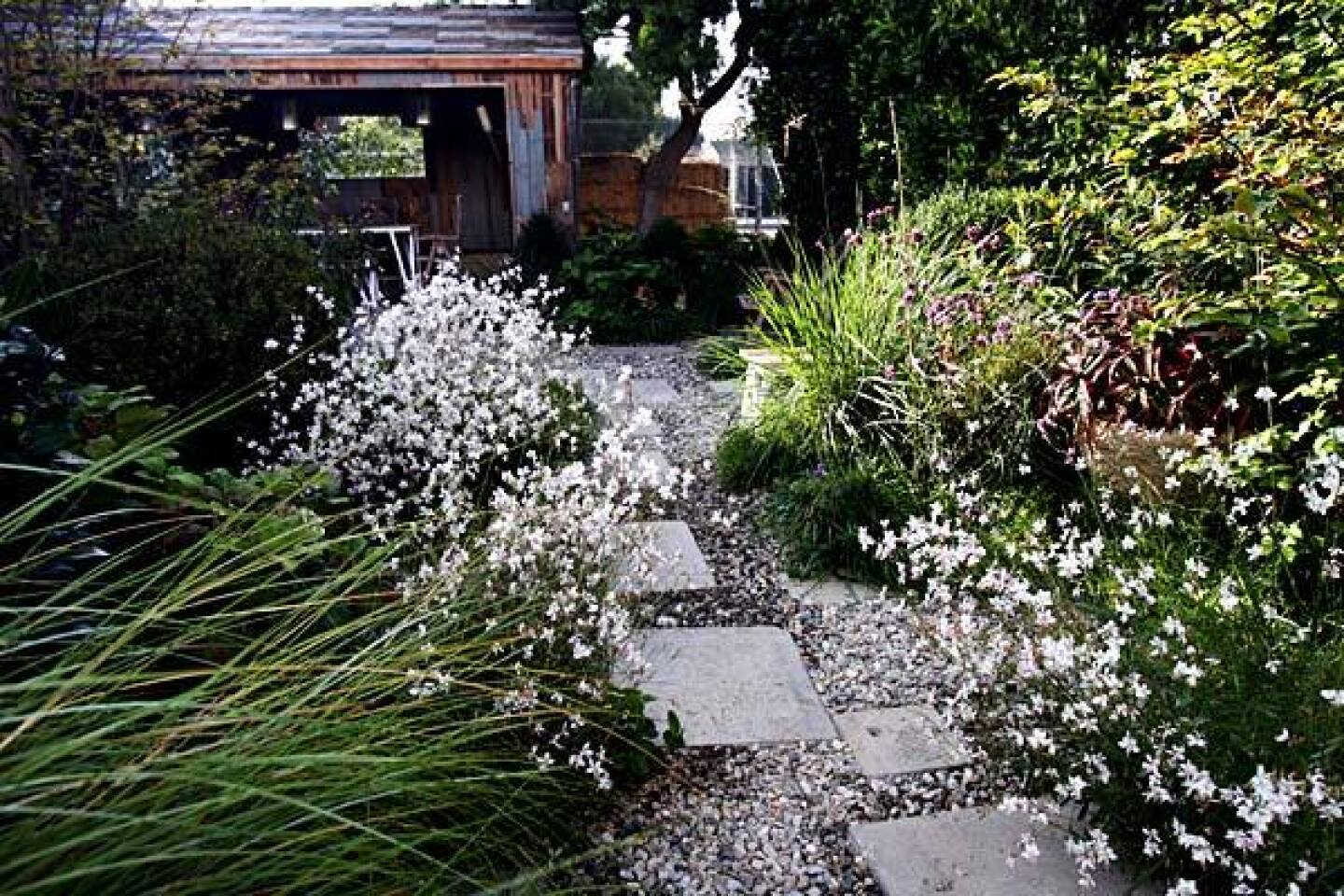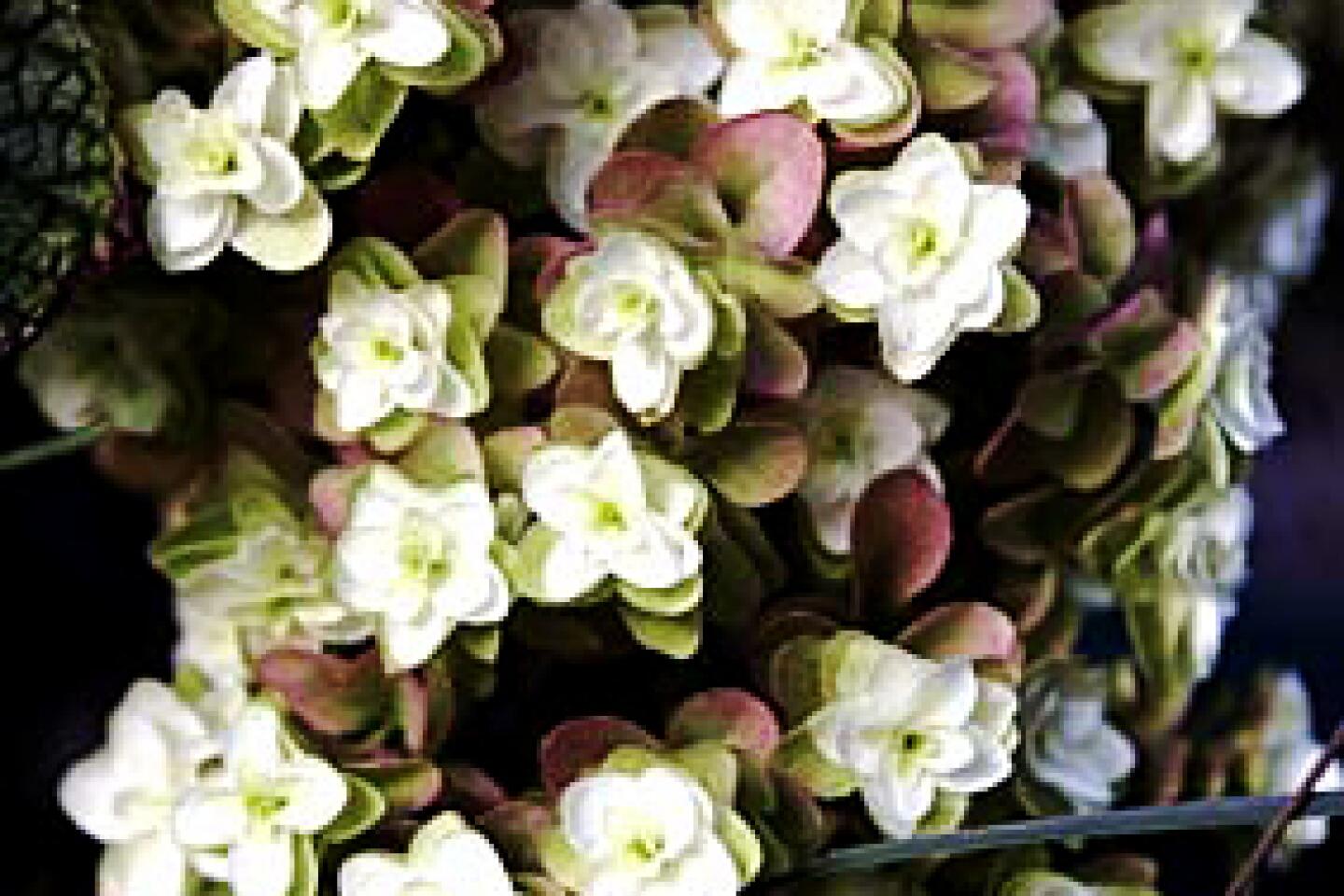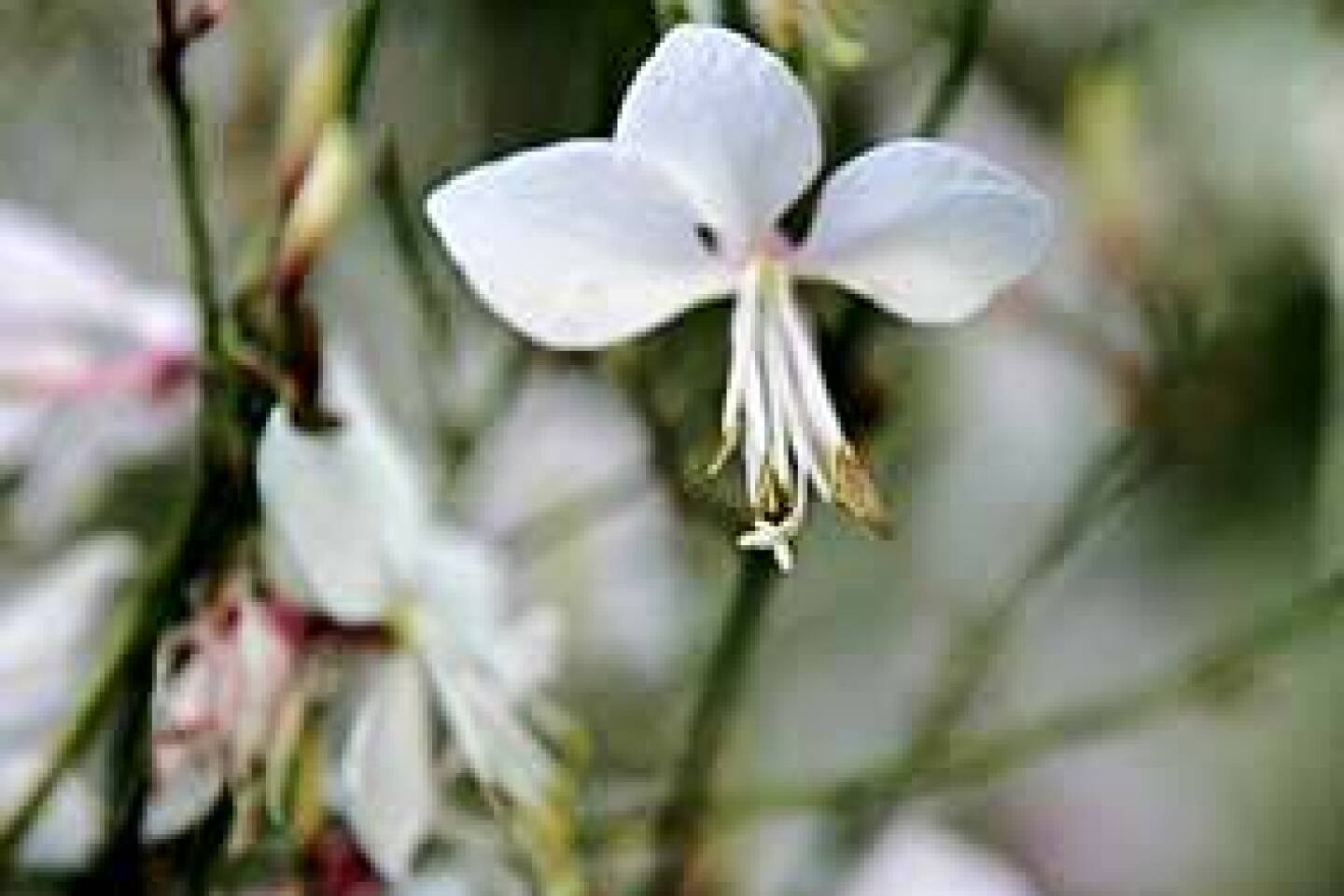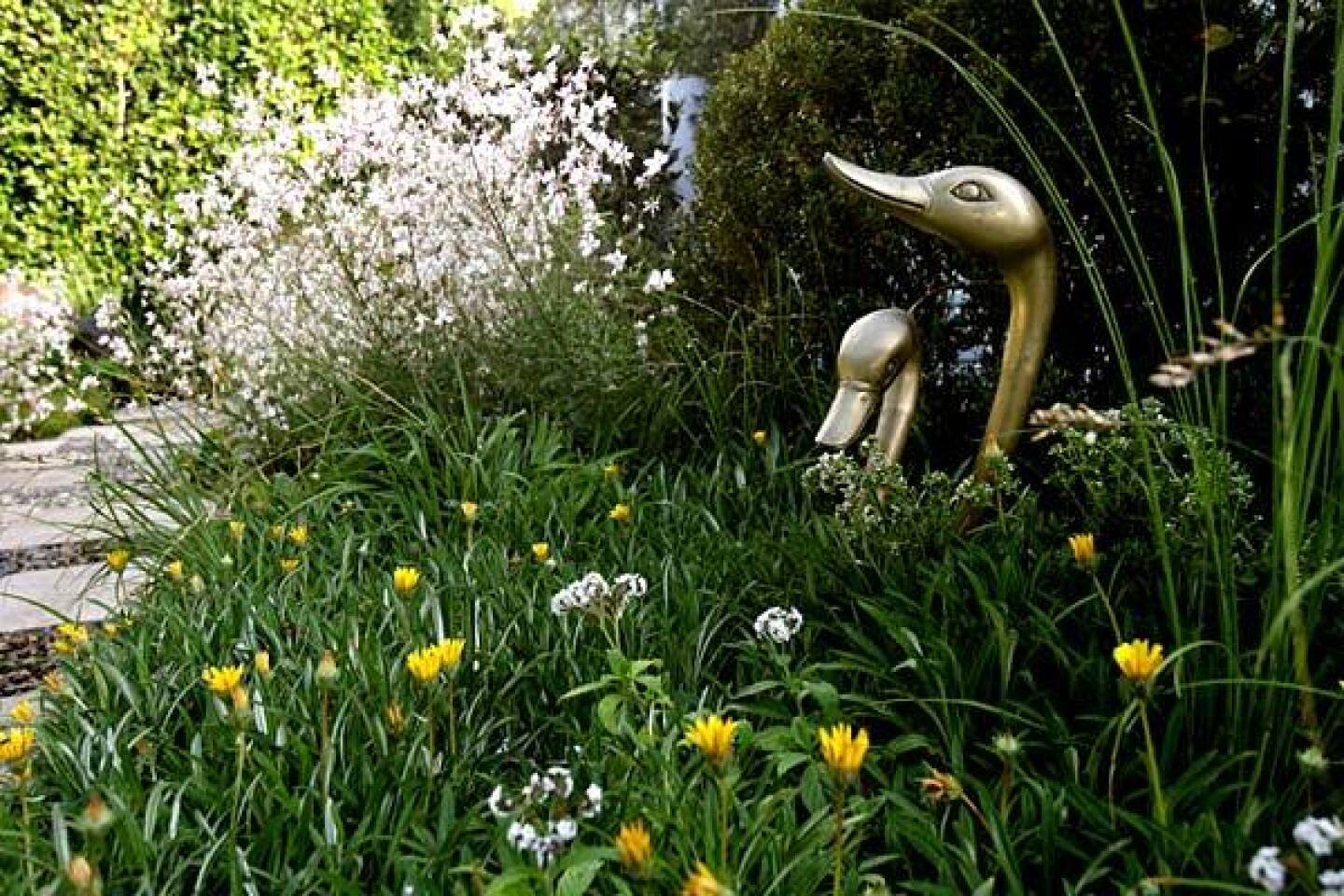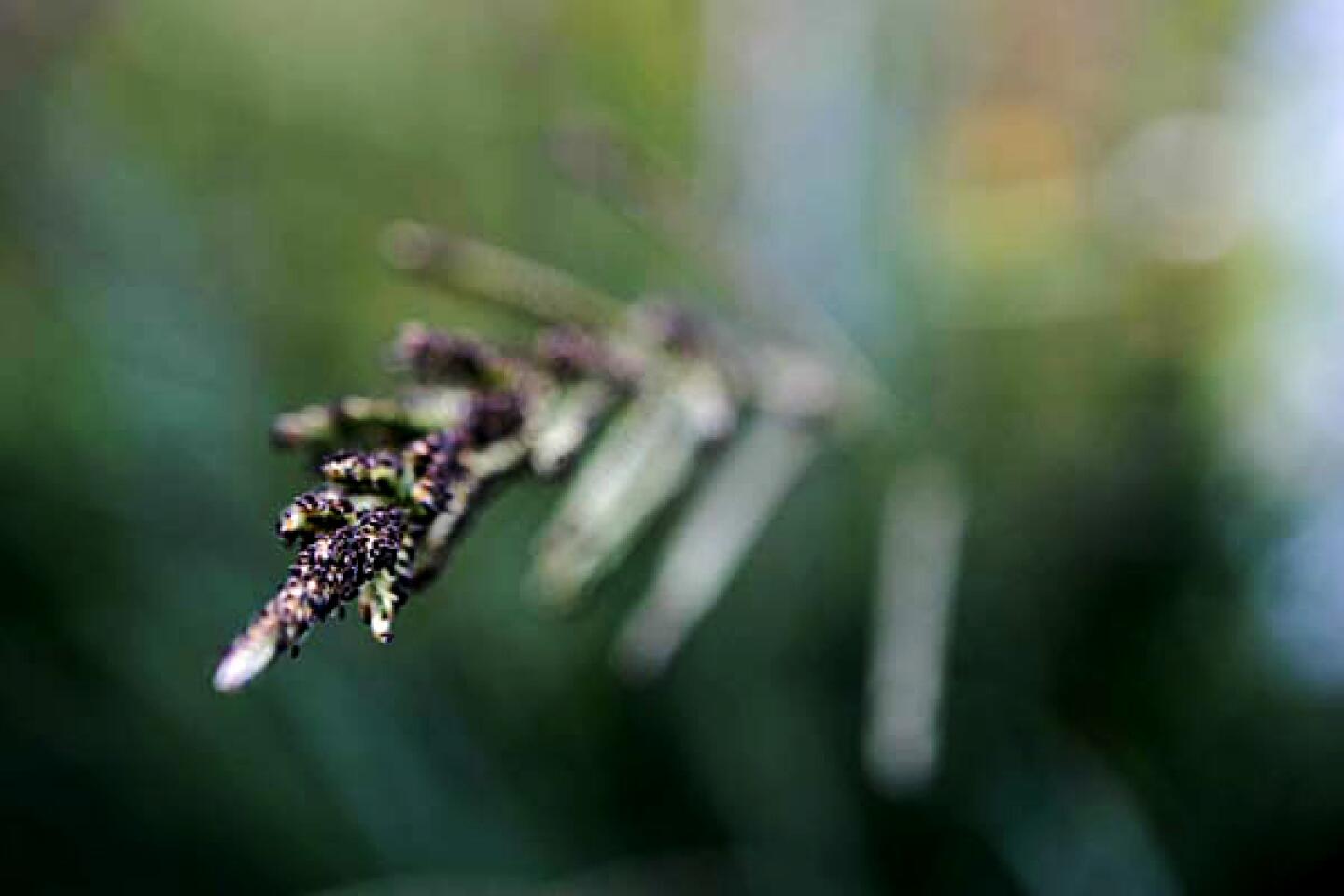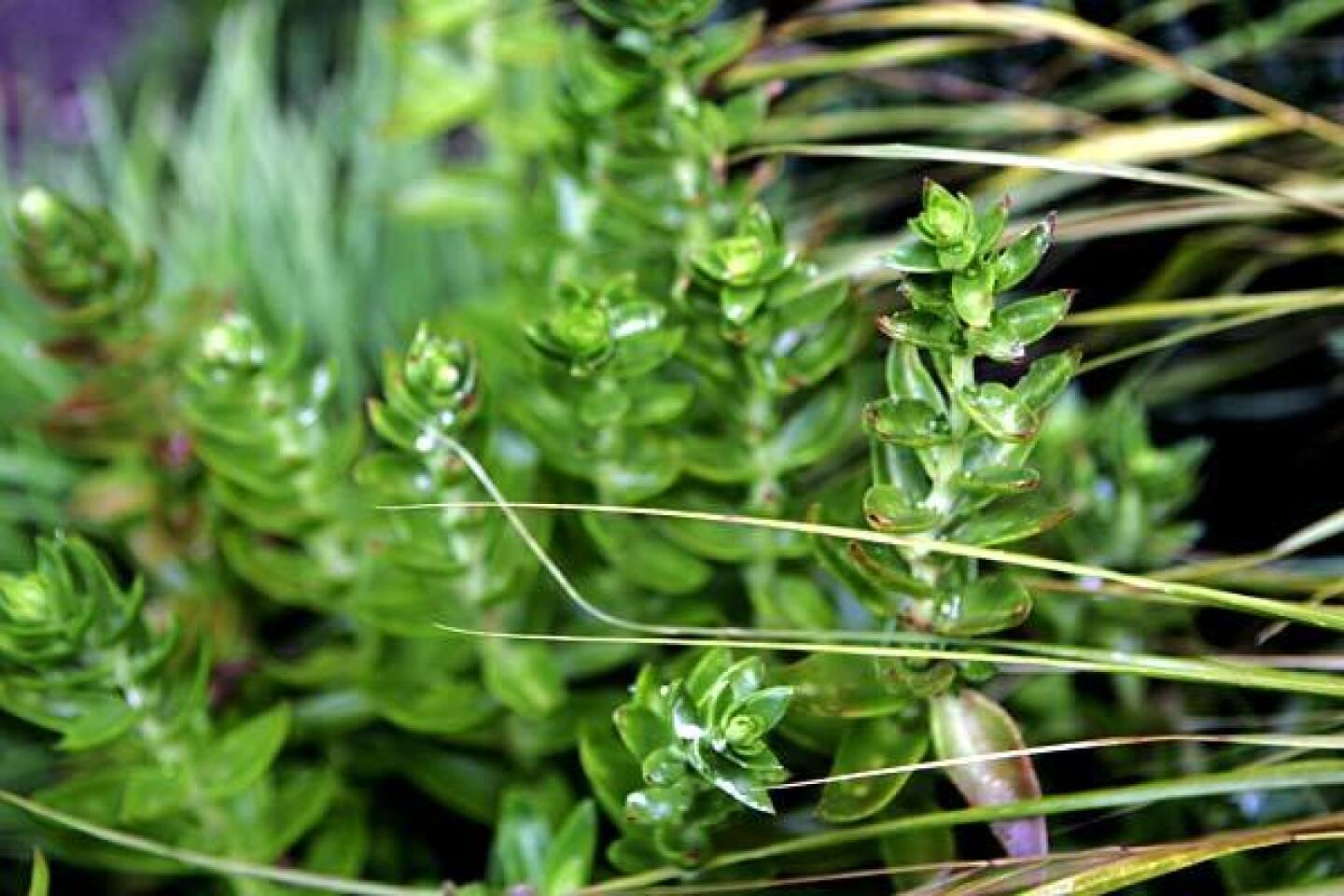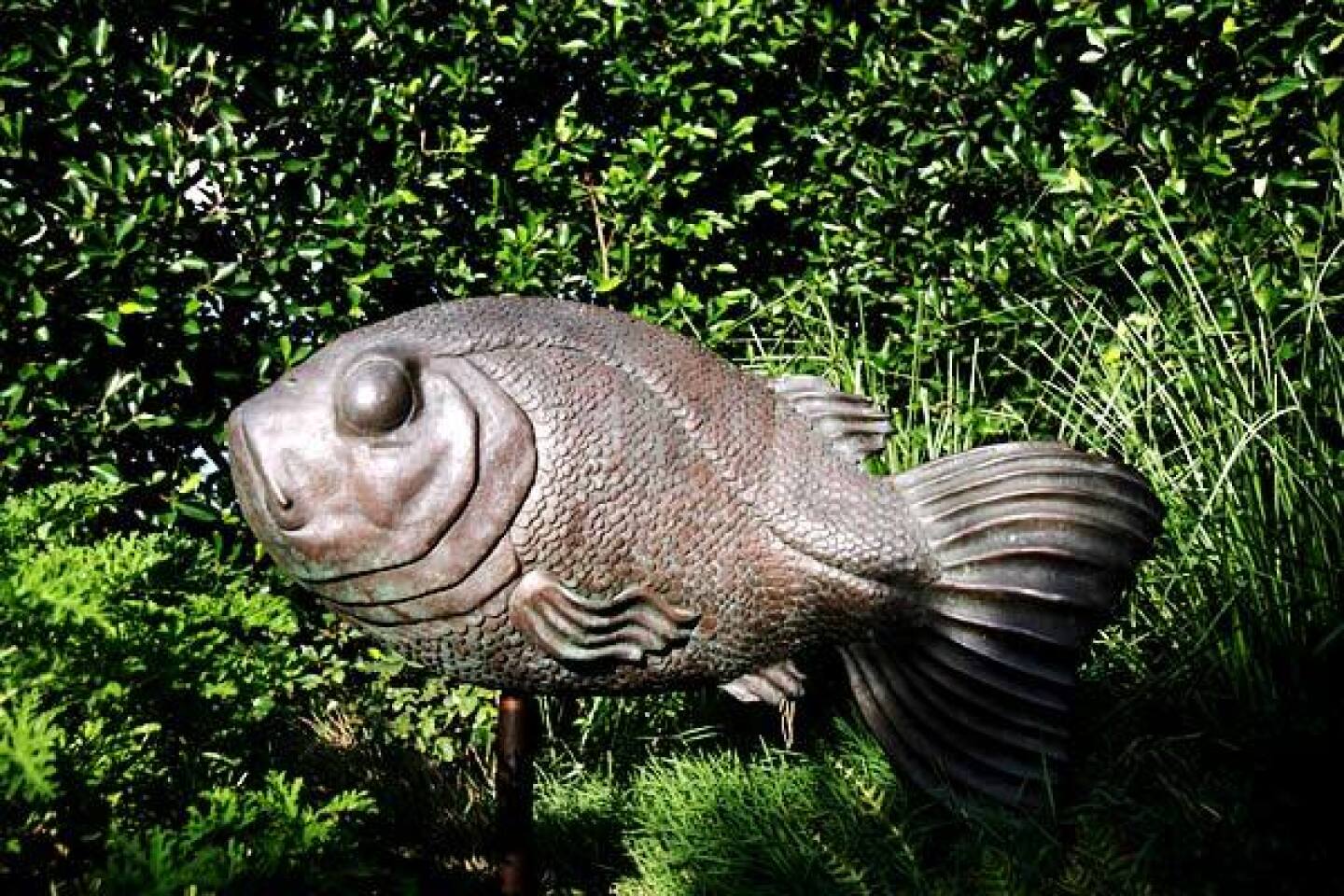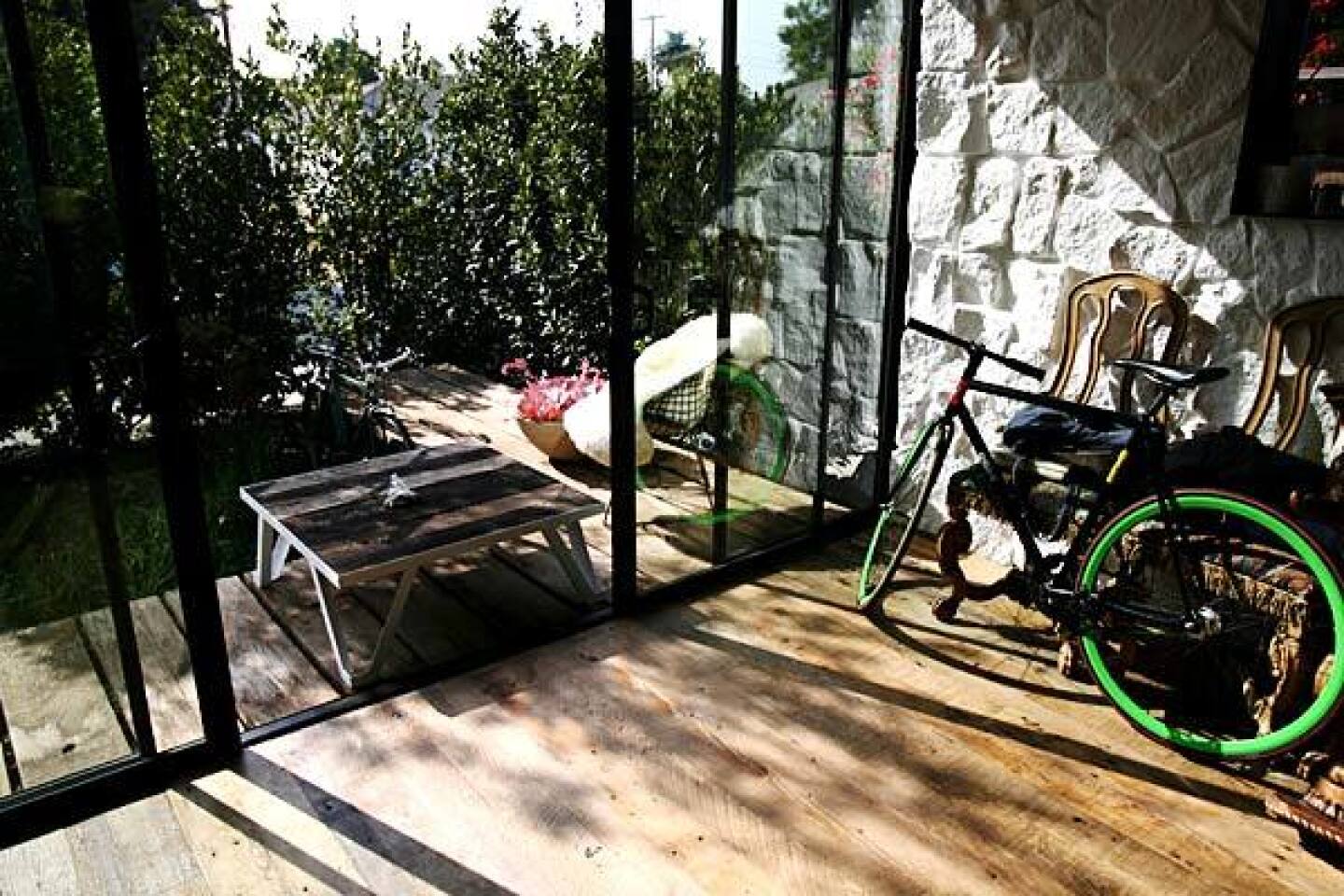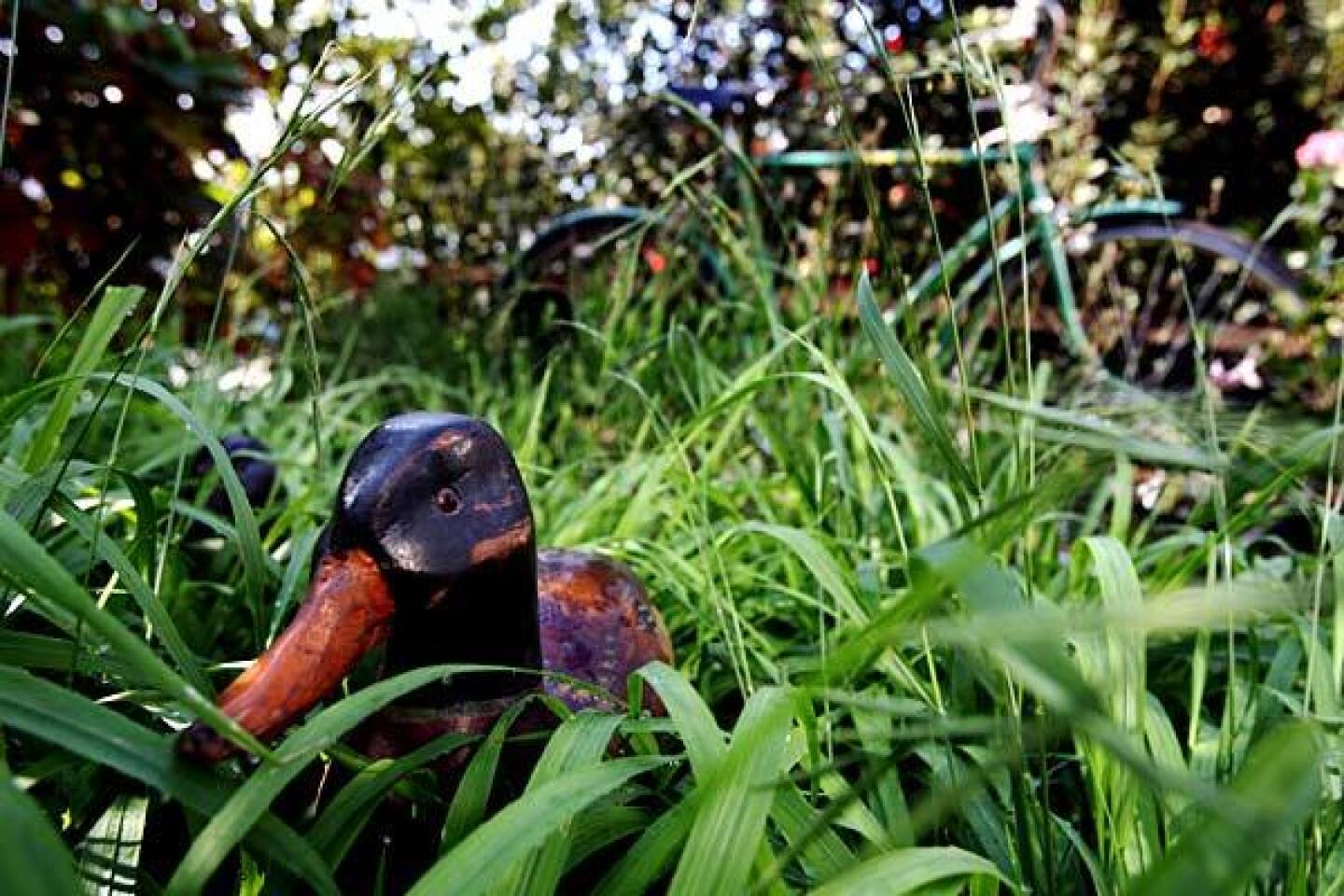Landscape designer Sean Knibb likes nature’s ideas
Lawns, flower beds, vegetable patches and herb gardens. The segregation of these regions in our yards baffles landscape designer Sean Knibb.
“Why can’t all these things live together, more naturally, like you see in a meadow?” he asks.
In three of his recent small-scale Los Angeles gardens, they do. Grasses, succulents, flowers, herbs and vegetables are woven together in beds and borders along with shrubs and trees.
The results are lush and sophisticated explosions of color, texture and volume that reference English country gardens yet are sensitive to drought-prone California.
“Part of the aesthetic is to capture the look of where prairie meets forest,” Knibb says. “The layering that happens in nature is the coolest thing.”
The frontyard of Knibb’s Venice home is defined by fluffy stands of tall ornamental grasses such as paspalum and mounds of shaggy bromus and delicate sisyrinchium, commonly known as blue-eyed grass.
“It’s a manicured meadow, my substitute for a lawn,” Knibb says, one that requires about 30% of the water needed to maintain traditional turf.
In the backyard of his client Ling-Su Chinn, owner of the Planet Blue clothing boutiques, Knibb created the effect of a miniature forest with shrubs such as boxwood and silver anniversary buddleja. For trees, he relied on varieties of myrtle. The prairie portion took a tropical twist: stands of tall miscanthus grass mixed with white ginger, fortnight lilies and plumeria.
The 1,200-square-foot garden behind Knibb’s office on Abbot Kinney Boulevard in Venice is a showcase for his country-in-the-city vision. There, he laid down a path of pavers and gravel that imitates the silhouette of a city skyline. It meanders through cultivated meadows: beech trees and boxwoods anchoring beds with fountains of prairie grasses and clusters of hardy flowers including gaura and yellow milkweed, which attracts butterflies. These plants surround and help retain moisture for what he calls “British grandma” bushes: boxwood, Hot Cocoa roses and oak leaf hydrangea. Orange- and yellow-flowering gazania, velvety-leafed scented geraniums and fragrant herbs such as oregano, thyme and parsley serve as ground cover surrounding cressula and other sculptural succulents. Strawberry runners trace a path through the gravel, part of a rotating crop of seasonal fruits and vegetables woven into the beds.
The designer invokes similes to describe why edibles work so well when integrated with the grasses and flowers.
“They are like molding on a building,” Knibb says, “or embroidery on a shirt.”
